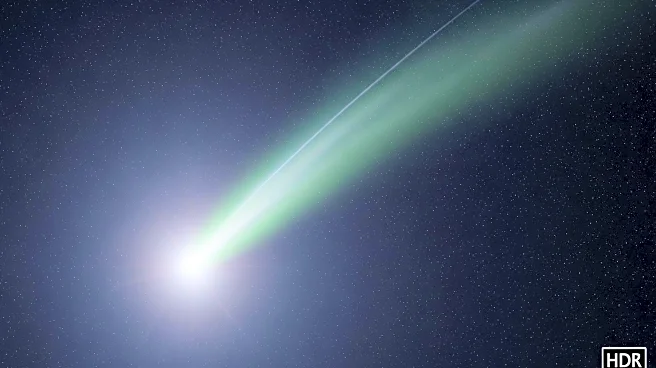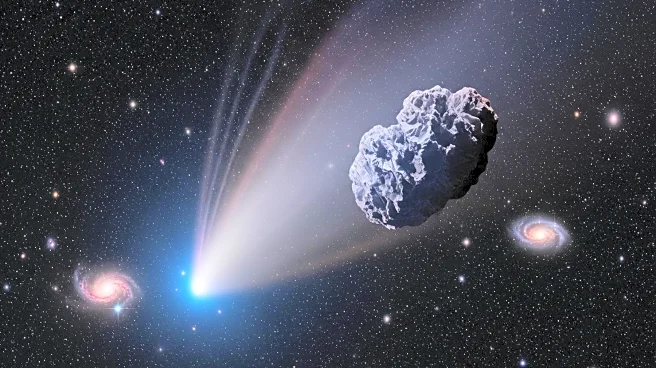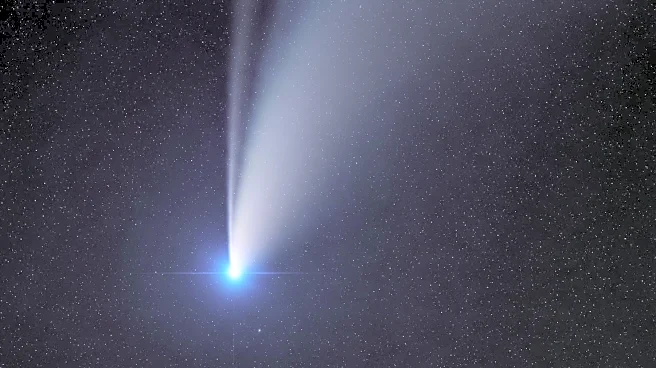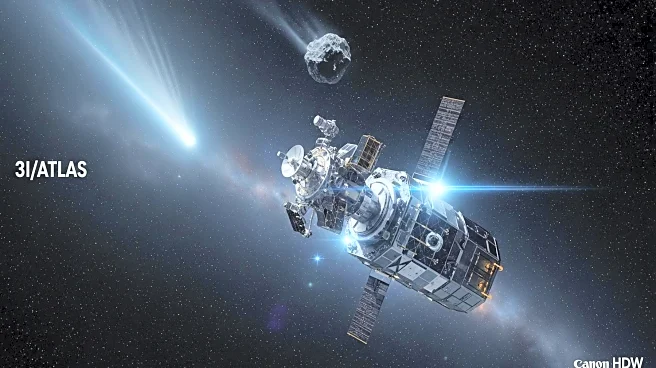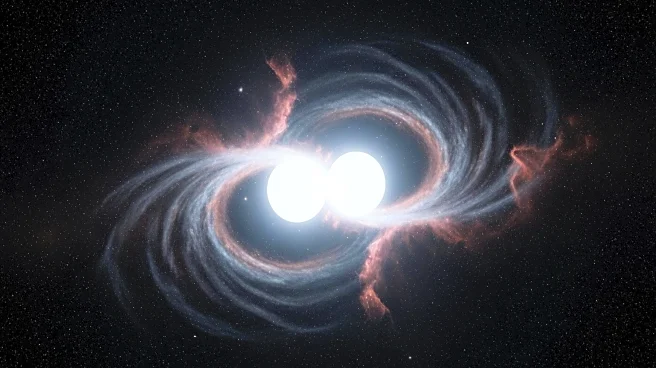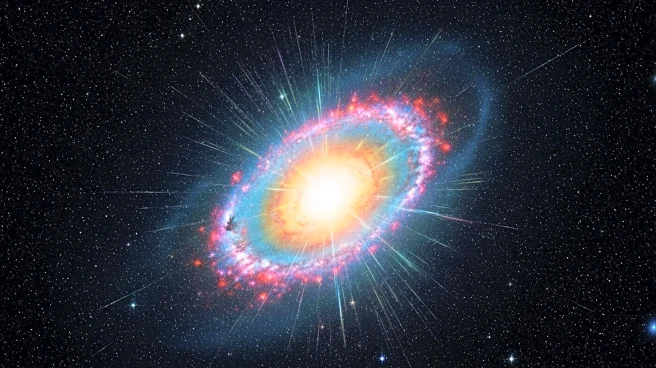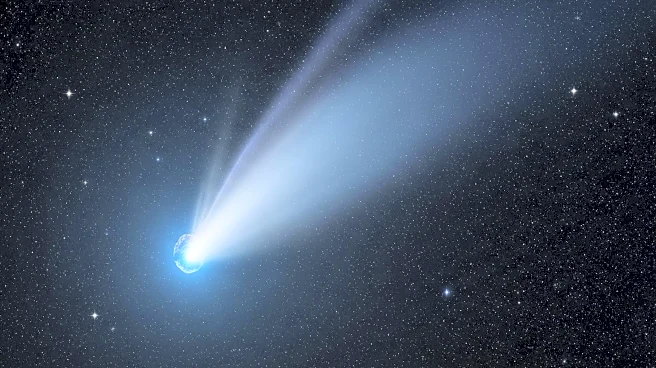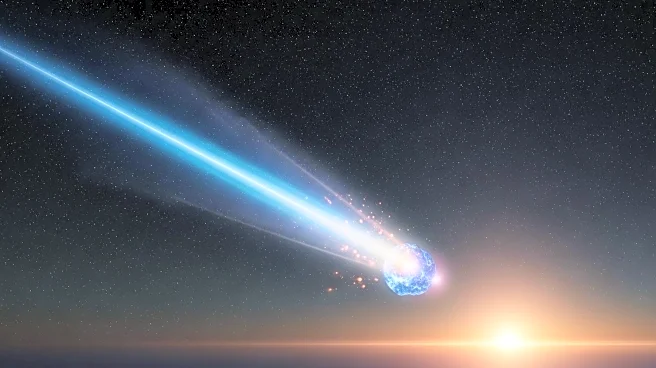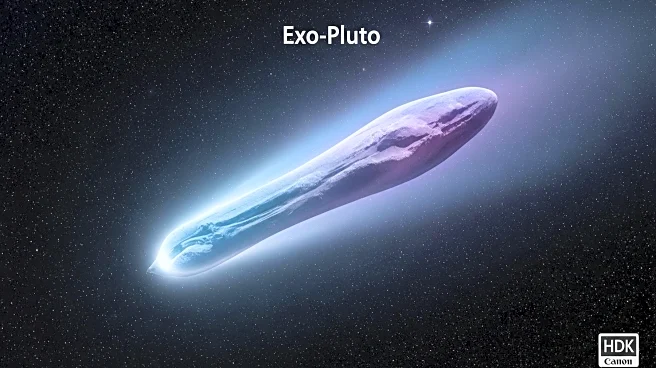What is the story about?
What's Happening?
Recent images of the interstellar comet 3I/ATLAS suggest it may be turning bright green as it approaches the sun. The comet, first spotted in July, is on a one-way journey through the solar system, likely originating from a distant star system. As it nears the sun, the comet is expelling more ice, gas, and dust, forming a traditional cometary tail. Astrophotographers captured images during a lunar eclipse, showing a surprising emerald hue, possibly due to rare chemicals being released from the comet's core. However, the coloration has not been confirmed by other observatories.
Why It's Important?
The potential green hue of 3I/ATLAS could provide insights into the chemical composition of interstellar comets, which differ from those originating within our solar system. Understanding these compositions can enhance knowledge of cosmic chemistry and the processes affecting cometary bodies as they interact with solar radiation. The study of interstellar comets like 3I/ATLAS may also contribute to broader research on the origins and evolution of celestial objects in the Milky Way.
What's Next?
Further observations are needed to confirm the green coloration and identify the chemicals responsible. As the comet continues its journey, it will soon pass out of view as it moves behind the sun, reappearing later in the year. Scientists will continue to monitor its trajectory and chemical emissions, potentially using spectroscopic analysis to detect specific molecules.
Beyond the Headlines
The study of interstellar comets raises questions about the potential for alien technology, as some researchers speculate on the origins of such objects. While the focus remains on natural phenomena, the exploration of interstellar visitors contributes to the ongoing debate about extraterrestrial life and technology.
AI Generated Content
Do you find this article useful?
